How To Grip A Putter
Learn how to grip a putter with the help of Golf Monthly Top 50 Coaches Katie Dawkins and Andrew Jones...
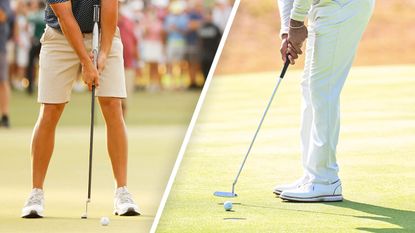

Understanding how to grip a putter is one of the key fundamentals in golf, but it can be difficult to know where to start. Getting the 'feel' right is an important factor, and so is ensuring you have the best putter for you in the bag, as so much success in putting comes from confidence on the greens.
While you might feel comfortable with executing the perfect golf grip with your driver or irons, there is a little more room for creativity when it comes to the flat stick.
In recent times, players at tour and club level have experimented with different ways to hold the putter, so we asked Golf Monthly Top 50 Coaches Katie Dawkins and Andrew Jones to share the most popular variations that you can try the next time you head to the practice green...
How To Grip A Putter: Conventional

Golf Monthly Top 50 Coach Katie Dawkins demonstrating the conventional putting grip
Before you look to make changes on the greens, or try out some of the best putting tips, make sure you first focus on perfecting your grip.
The most common method is the traditional right-hand-below-left grip, which most golfers start off with and continue to use successfully. Some of the best players ever have used this grip (think Tiger Woods or Rory McIlroy for examples of major success). As we grip our irons in much the same way, this conventional grip feels the most natural way to hold a putter.
The main difference is that, rather than holding the grip in your fingers as on a full iron shot, you grip the putter in your palms so they are looking skyward. This locks out the hands and encourages a hands-free pendulum action. Then, rather than interlocking your fingers underneath to unite the hands, use a reverse overlap position.
Place the index finger of your top hand over the cuticles of the bottom fingers. It will feel like you haven’t got a proper hold but that’s good as you can only use a rocking action from here, taking your wrists out of the stroke.
Get the Golf Monthly Newsletter
Subscribe to the Golf Monthly newsletter to stay up to date with all the latest tour news, equipment news, reviews, head-to-heads and buyer’s guides from our team of experienced experts.
The Claw
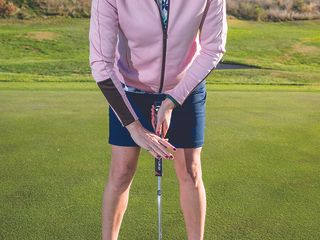
Golf Monthly Top 50 Coach Katie Dawkins demonstrating the claw putting grip
The claw grip for putting is quite a radical method, but nevertheless very effective for those who master it. Place your left hand at the top in the conventional position (as outlined below), with your right hand then holding the putter grip between thumb and forefinger and your palm facing your body (top photo). This is another great cure for the yips, even if it looks a little odd. It can take a while for you to place your lower hand on the club in a way that feels comfortable.
Left Hand Low
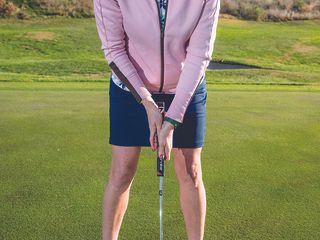
Golf Monthly Top 50 Coach Katie Dawkins demonstrating the left hand low putting grip
If you are currently struggling with the conventional grip, then the left-hand-low style could be a switch that rids you of your woes. It really locks your hands and arms together to get you stroking your putts more solidly and consistently. It is simply a reverse of the traditional putting grip with the left hand below the right.
Major Champion Jordan Spieth, who is one of the best putters on the PGA Tour, uses this grip. The main benefit is that it helps to take unwanted hand action out of the stroke – an ideal cure for the yips, especially important on those shorter putts.
The Pencil Grip

The pencil grip sees the lower hand working in a completely different fashion, mirroring the way you would hold a pencil. It gives you the feeling of a much lighter grip in your right hand, with the palm working more towards the target. Again, the idea is to stop the right hand dominating. It keeps the small-twitch muscles out of your stroke and utilises the big core muscles to control things.
It also keeps your right side more connected to your torso with the right elbow tucked in against your side – something that can promote a more consistent stroke.
The Saw Grip
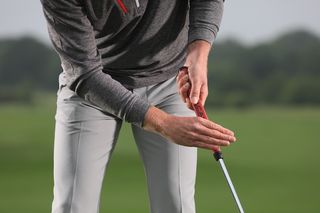
The saw grip, as you might imagine, is so-called because the right hand mirrors how you might grip and use a saw. The right-hand fingers sit on top of the grip pointing towards the target, with the grip sitting in the V between your right thumb and forefinger.
Unlike the pencil grip, it pulls the right elbow away from your body, so may not suit those who like to feel more connected to their torso. But it may prove a good option for those who like to feel more over the ball at address and who prefer a much straighter pendulum with less of an arc.
Armlock

The armlock grip is an option for those using longer-than-standard putters. It has been popularised by Matt Kuchar, Bryson DeChambeau and others.
With the putter locked against your forearm, it almost feels like you’re bowing the left wrist out. There’s absolutely no chance of it breaking down through the ball. Historically, both Kuchar and DeChambeau have employed a fairly conventional right-below-left, right-hand grip.
This style of grip typically de-lofts the putter, so you may need to move the ball further forward in your stance or have the loft on your putter adjusted a little. This one may suit those who feel mechanics rather than feel will help them hole more putts.
Oversize Putter Grips

Finally, oversize putter grips of varying sizes are now very common. While some may still work with one of the putting grips above, the fattest grips are better-suited to what is known as a two-thumb grip. Indeed, one of the company’s making such grips is TwoThumb.
These grips are so wide that both hands can sit together at the same level, with the thumbs sitting side by side down the front of the grip and the forefingers pointing down either side of the grip.
This is another grip that gets the shoulders level and allows a pure pendulum motion back and through. It can work well on faster greens but may prove a little trickier to master from long range on slower greens.
If a conventional putting grip is no longer working for you, why not experiment with one of these other options to potentially get your putting back on track?

Location: Walmer & Kingsdown Golf Club
After turning professional in 1991, Andrew served as Assistant Pro at Royal Cinque Ports from 1993 until 1998, before spending three years as Head Pro at Lydd Golf Club. He remains in Kent and, after a spell as the Director of Coaching at Sene Valley, is now the Club Professional at Walmer & Kingsdown Golf Club.
Students learn best when...
They have bought into your vision, passion and enthusiasm as a coach and are prepared to go on the journey with you sharing experiences and opinions with an open mind to what is necessary to improve their game. Both the pupil and the coach need to be entering this relationship with eyes, ears and senses wide open and a willingness give it a go!
Greatest teaching influence:
Fellow Top 50 coach, former boss and mentor, Andrew Reynolds. In my early years as a trainee PGA assistant at Royal Cinque Ports, he instilled in me the importance of the analysis of ball flight and also identifying cause and effect within the swing. Other notable (Tour) coaches I have studied carefully during my development have been David Leadbetter and Butch Harmon.
Most common problem:
The grip. For me, it has to be the poor connection to the club itself that can have a fundamental and sometimes catastrophic influence on how we stand to, move and deliver the club to the ball.
-
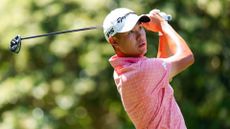 RBC Heritage Tee Times - Round Three
RBC Heritage Tee Times - Round ThreeThe top nine at the RBC Heritage are separated by just two shots as the action heats up on the weekend at Harbour Town
By Ben Fleming Published
-
 15 Big Names To Miss The Cut At The Chevron Championship
15 Big Names To Miss The Cut At The Chevron ChampionshipA number of big names missed the cut at the Chevron Championship, as a stacked leaderboard has set up a thrilling weekend in Texas
By Matt Cradock Published
-
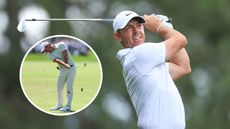 Improve Your Irons Shots In Golf With 10 Expert Tips From A PGA Advanced Professional
Improve Your Irons Shots In Golf With 10 Expert Tips From A PGA Advanced ProfessionalDo you want to become a better iron player? These 10 expert tips will improve your ball striking and help you find more greens in regulation...
By Jo Taylor Published
-
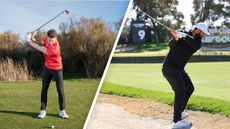 This Easy To Spot Mistake Might Be Killing Power In Your Golf Swing...
This Easy To Spot Mistake Might Be Killing Power In Your Golf Swing...Golf Monthly Top 50 Coach Gary Munro shares some simple tips to improve your ball striking by addressing one aspect of your golf swing...
By Gary Munro Published
-
 Want To Become A Better Golfer? Collin Morikawa’s 5 Tips To Shoot Lower Scores
Want To Become A Better Golfer? Collin Morikawa’s 5 Tips To Shoot Lower ScoresFresh from his third place finish at The Masters, we bring you five top golf tips from two-time Major Champion, Collin Morikawa...
By Dan Parker Published
-
 I'm A PGA Pro And I Can Eliminate Your Golf Swing Takeaway Troubles With 3 Expert Tips And Drills...
I'm A PGA Pro And I Can Eliminate Your Golf Swing Takeaway Troubles With 3 Expert Tips And Drills...Golf Monthly Top 50 Coach Neil Marr shares his advice on how to cure your golf swing takeaway troubles...
By Neil Marr Published
-
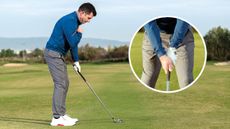 'The Path To Success Is Simpler Than We Think'... PGA Pro Dan Grieve Shares 5 Expert Tips For A Repeatable Golf Swing Set-Up
'The Path To Success Is Simpler Than We Think'... PGA Pro Dan Grieve Shares 5 Expert Tips For A Repeatable Golf Swing Set-UpGolf Monthly Top 50 Coach Dan Grieve shares 5 expert tips to simplify your set-up...
By Dan Grieve Published
-
 Get A Major Boost From Tee To Green With This Masters Champion's 5 Timeless Tips
Get A Major Boost From Tee To Green With This Masters Champion's 5 Timeless TipsThe 2003 Masters Champion shares five timeless tips that will help you improve your golf from tee to green...
By Barry Plummer Published
-
 Is This The Most Under-Practised Shot In Golf? 3 Expert Tips To Flush It When The Ball Is Above Your Feet
Is This The Most Under-Practised Shot In Golf? 3 Expert Tips To Flush It When The Ball Is Above Your FeetRarely are we blessed with a nice flat lie on the golf course, but that doesn't have to be a big concern thanks to these three expert tips...
By Ged Walters Published
-
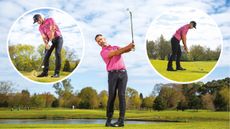 Destroy Your Opponents With These 6 Invaluable Iron Play Tips
Destroy Your Opponents With These 6 Invaluable Iron Play TipsThese 6 iron play tips, from Golf Monthly Top 50 Coach Zane Scotland, will help you create plenty of birdie chances...
By Zane Scotland Published